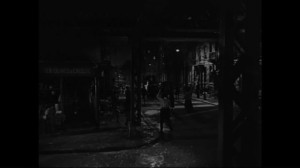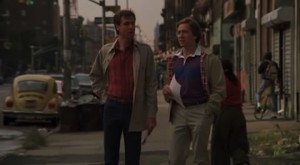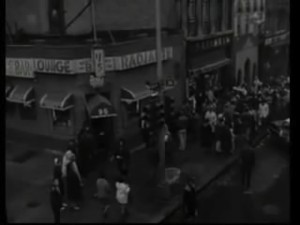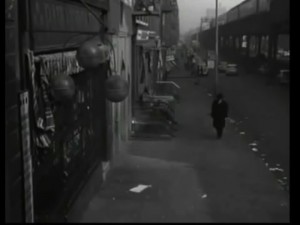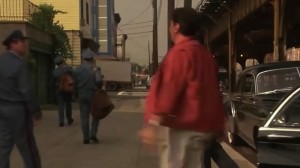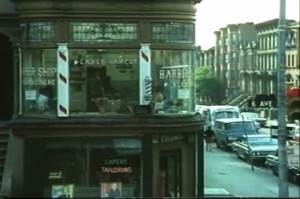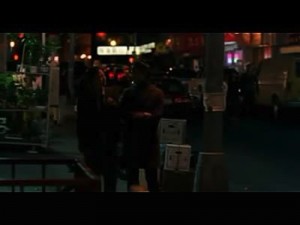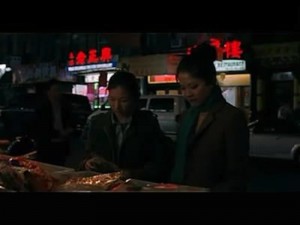Archive for the ‘The Peopling of New York City’ Category
The Romantic Lower East Side
The Lower East Side was once the most populated neighborhood in New York City. Most of its residents were Jewish immigrants. Hester Street (1975) and Crossing Delancey (1988) are films that depict American-Jewish’s struggles to get away from their traditions and fully assimilate into the mainstream American society. Their struggles cannot just be seen from their lifestyles but also from their romantic relationship. In Hester Street, Jake (Steven Keats) marries Mamie (Dorrie Kavanaugh). Although he leaves himself a bad reputation for cheating and abandoning his wife, he takes a step forward in fulfilling his dream. As for Gitl (Carol Kane), she finds her true love with Mr. Bernstein (Mel Howard) and continues to live happily on Hester Street. In Crossing Delancey, Isabelle (Amy Ivring) wants get away from her Jewish tradition of marrying a Jewish man. However, after much struggles, she eventually finds out that her Jewish tradition can perhaps give her the most romantic life. Both of these films portray the Lower East Side as a romantic neighborhood, and every street seems to have its own love stories.
Do the Right Thing in Bedford-Stuyvesant
Spike Lee is famous for his film Do the Right Thing (1989) sets in Bedford-Stuyvesant. As a neighborhood that is as underprivileged as Harlem, Bedford-Stuyvesant is a symbol of racial conflicts in the film. At the climax of the film, the white policeman kills Radio Raheem (Bill Nunn), and Mookie (Spike Lee) destroys Sal’s (Danny Aiello) pizzeria as revenge. This film shows that people are so dissatisfied with their disadvantageous conditions that even some minor conflicts will instigate serious riots. The theme of racial inequality prevails through the film. Every component of the film is about people’s dissatisfaction toward inequality. The theme song is the famous “Fight the Power.” The notion of being treated unequally is common among characters’ dialogues. Do the Right Thing and Bedford-Stuyvesant become symbolic representations of African Americans’ desire to achieve racial equality.
The American Dream in Little Italy
Little Italy is an Italian-American populated neighborhood located near the Lower East Side. Many Italian immigrants lived in there during the early twentieth century. Christ in Concrete (1950) is a film that depicted Italian immigrants’ struggles toward fulfilling their American dreams. Although the film was shot in Britain instead of New York City, and the feeling of Little Italy might not be very realistic, the portrayal of immigrants’ diligence was very convincing. Geremio (Sam Wanamaker), an Italian-American bricklayer, could not afford a house when he marries his wife Annunziata (Lea Padovani), but promises her to buy one soon. Throughout the film, Geremio works diligently to earn money for the house. Though he has an affair with Kathleen (Kathleen Ryan), his wife eventually forgives him. At the end, Geremio dies in an accident. Yet, his hard work finally buys a house for his family. Though today, very few Italian-Americans still reside in Little Italy, the concept of hard work remains people’s mind forever.
He Who Arrived in Harlem
Harlem is the largest African American neighborhood in America. It is the setting of many films about racial discrimination and inequality. The Brother From Another Planet (1984) is one of them. In this film, Brother (Joe Morton) comes to Harlem when he escapes slavery from another planet. During his stay, he experiences many problems such as poverty and drug abuse in Harlem. Because he comes from another planet, he has some extraordinary functions that can help to solve problems for the people around him. The Brother From Another Planet presents the problem of African Americans’ social inequality in New York City. Throughout the film, outsiders are afraid of Harlem because of their stereotypes. This highly prevents its residents from achieving equality with the rest of New York residents. This film advocates people to be aware about the problems in Harlem, and attempts to lessen the stereotypes about this neighborhood.
The Poor vs. The Haunted in East Harlem
East Harlem is another poor neighborhood in New York City. However, in the films, many residents of the neighborhood often had very horrible experience before. They moved to East Harlem to try to escape the unpleasant memories that always haunted them. The Pawnbroker (1965) is an example. In this film, Sol Nazerman (Rod Steiger), who is a Holocaust survivor, has a pawnshop in East Harlem. He has a Puerto Rican assistant, Jesus Ortiz (Jaime Sanchez), who wants to learn how to earn more money from him. Because Nazerman is so haunted by his horrible memories, he ignores other people’s feelings. This causes Jesus to conspire with his friends to rob the pawnshop. However, at the end of the film, Jesus dies when he tries to protect Nazerman from a gunfight. This shows that East Harlem is a warm and humane neighborhood. Although its residents seem to be violent and aloof, it is because of their poverty and terrible memories. Underneath this disguise, they are very sincere and truthful.
Tragic West Side
Because of gentrification, people can barely see the underprivileged West Side in West Side Story (1961). The musical describes the racial conflicts between the European immigrants’ gang Jets and the Puerto Rican gang Sharks. Among these conflicts, Tony (Richard Beymer) and Maria’s (Natalie Wood) love story is the most attractive. Their romantic interracial relationship contrasts with the racial conflicts between the gangs. Yet, their story is also very tragic. Maria’s brother dies during a gang fight. At the end of the story, Tony dies as a revenge for the Puerto Ricans. Though Tony and Maria’s romantic relationship is very short and tragic, it teaches people the devastated consequence of racial conflicts. The chaotic West Side only remains in people’s memory. Today’s West Side is an integrated and harmonious area. However, West Side Story often reminds people that racial conflict is still a problem in New York City.
The Gangsters in East New York
The East New York in Goodfellas (1990) is not a pleasant neighborhood for common people to live in. The film describes Henry Hill’s life (Ray Liotta) as a member of the Mafia. Henry grows up in East New York. Mafia is the dominating gang in this neighborhood in Brooklyn. They have great influence over the local business and public security. They have more powers than any other local authoritative officials do. In fact, the Mafias often bride the police to conspire in order to protect them when they commit crimes. As a child growing up in such environment, Henry is greatly influenced by them, which leads him to become part of them. In Goodfellas, East New York is portrayed as the Mafia’s base. They are all over the neighborhood and control everything. The residents are afraid of them. The image of New York City in this film totally contradicts to its normal image as a place that can fulfill every dream and goal. The city is portrayed as a dark and notorious place in this film.
Gentrifying Park Slope
Park Slope was an underprivileged neighborhood. People who once lived in there could never imagine that today’s Park Slope is one of the wealthiest neighborhoods in New York City. However, the film The Landlord (1970) seems to foreshadow this point. When Elgar (Beau Bridges), the son of a wealthy family, purchases the house in Park Slope, the neighborhood seems to change as the African American residents become astonished and curious about their new white and wealthy landlord. At the same time, Elgar also brings changes to the neighborhood such as fixing the house and having good relationship with his tenants. Elgar’s moving to Park Slope is a symbol of gentrification. This suggests that more wealthy people will invest in this neighborhood. Nevertheless, it also creates the problem that the poor residents will be forced out the neighborhood as it becomes increasingly expensive to live in.
When Sexuality Struck Flushing
Flushing is a new Chinese populated neighborhood. It has the American openness and the Chinese conservativeness. Saving Face (2004) carries out the clash between these two qualities in terms sexuality. In this film, the mother (Joan Chen) is driven out of the neighborhood because she gets pregnant with her lover at the age of forty-eight without getting marry. The daughter, Wil (Michelle Krusiec) has a relationship with her partner, Vivian (Lynn Chen). Getting pregnant without marrying and homosexuality are highly sensitive subjects in the Chinese community. However, throughout the films, the two characters finally get acceptance in the community with their persistence. This shows that American and Chinese beliefs can coexist under the influence of the diversity of New York City.






